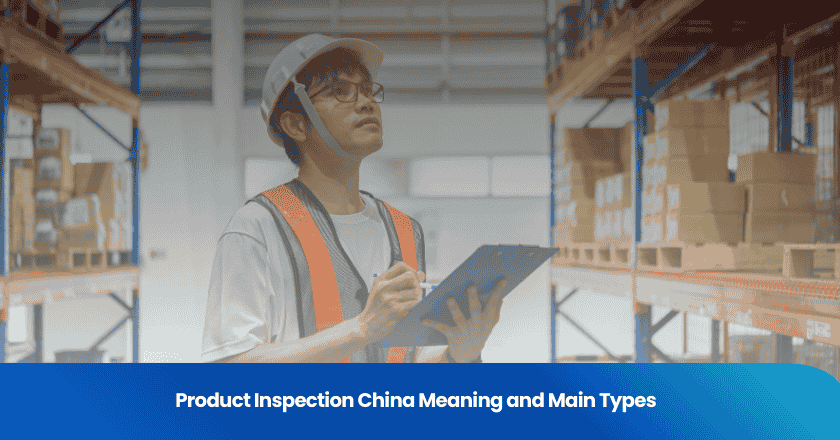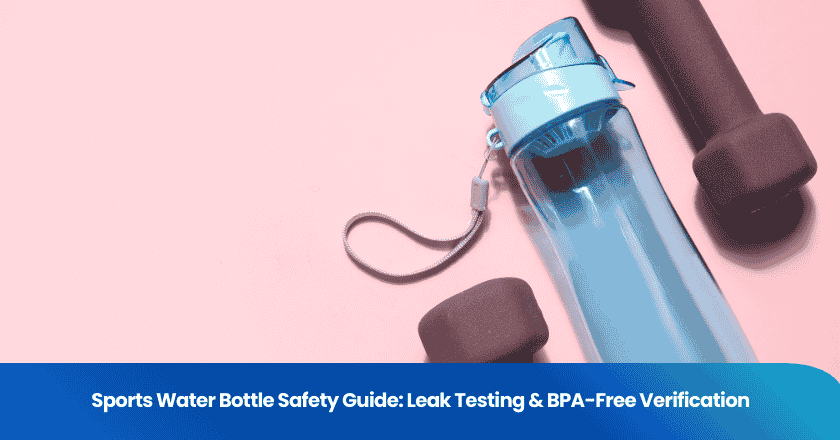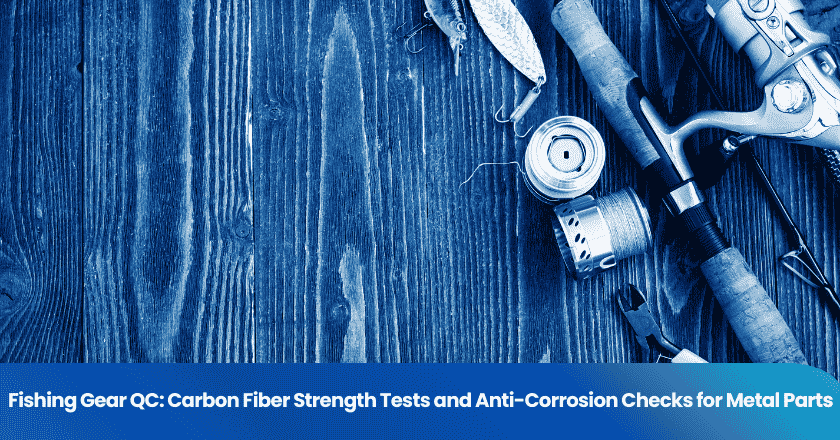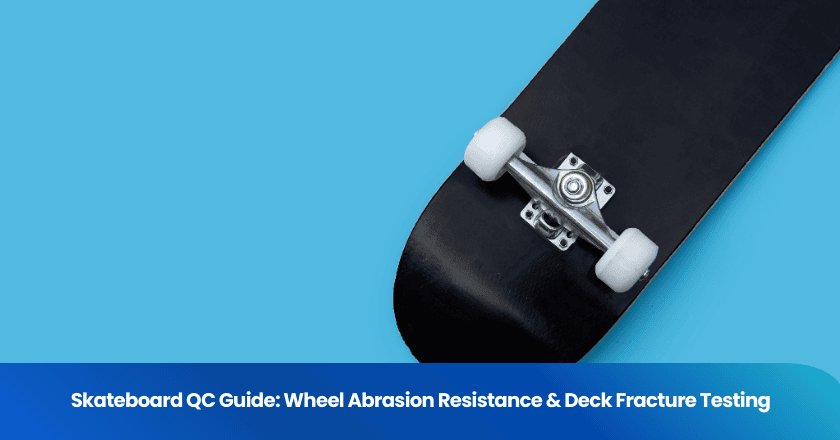
Product inspection china refers to a systematic process that measures, inspects, tests, or weighs product characteristics against established standards or buyer requirements. Companies rely on product inspection in china to verify the quality and compliance of goods before shipment. Product inspection helps importers reduce risks and ensures that every item meets expectations. Understanding the main types of product inspection china allows businesses to select the right approach for their needs. Proper product inspection in china supports consistent quality and regulatory compliance.
Key Takeaways
- Product inspection in China helps businesses check product quality and meet buyer standards before shipment.
- Different inspection types cover stages like before production, during manufacturing, before shipping, and container loading.
- Choosing the right inspection depends on product type, order size, and risk level to prevent defects and delays.
- Inspection reduces risks like defective goods, customer complaints, and legal problems, saving money and reputation.
- Using proper inspection builds trust with suppliers and ensures consistent quality for successful global trade.
Why Product Inspection China Matters
Key Benefits
Product inspection china plays a vital role for importers and businesses sourcing products from overseas suppliers. Inspection teams verify that goods meet buyer specifications and international standards. They help companies avoid costly mistakes and ensure that shipments contain only acceptable items.
- Risk Reduction: Inspection reduces the chance of receiving defective goods. Teams identify issues early, preventing shipment of products that fail to meet requirements.
- Quality Assurance: Inspectors check for quality problems at different stages of production. They confirm that materials, workmanship, and packaging align with expectations.
- Compliance: Inspection ensures that products comply with safety regulations and legal requirements. This process protects businesses from fines and recalls.
Tip: Regular inspection builds trust between buyers and suppliers. It encourages factories to maintain high standards and reduces disputes over product quality.
Risks Without Inspection
Skipping inspection exposes businesses to significant risks.
- Companies may receive defective goods that cannot be sold or used.
- Quality problems often go unnoticed until products reach the destination, leading to customer complaints and returns.
- Non-compliance with regulations can result in shipment delays, penalties, or legal action.
- Importers face financial losses from rejected shipments and damaged reputation.
| Risk | Impact on Business |
|---|---|
| Defective goods | Increased costs, lost sales |
| Quality problems | Customer dissatisfaction |
| Non-compliance | Fines, shipment delays |
Product inspection china acts as a safeguard. It helps businesses avoid these risks and maintain consistent product quality.
Main Types of Product Inspection in China
Product inspection in China covers several stages of the manufacturing process. Each stage uses a specific type of inspection to address unique risks and ensure product quality. The following types of quality inspection help businesses monitor production, verify compliance, and reduce the chance of defects.
Pre-Production Inspection (PPI)
Pre-production inspection takes place before manufacturing begins. Inspection teams review raw materials, components, and production readiness. They check if suppliers use the correct materials and if equipment meets technical requirements. This step helps identify potential issues early and prevents costly mistakes later.
- When to use: Before production starts, especially for new suppliers or complex products.
- Main purpose: Confirm that materials and components meet specifications and that the factory is ready for production.
Note: Pre-production inspection can reveal problems with materials or planning before they impact the final product.
Initial Production Check (IPC)
Initial production check occurs at the start of manufacturing. Inspectors examine the first batch of finished products. They compare these items to buyer requirements and technical drawings. This inspection ensures that the production process follows agreed standards from the beginning.
- When to use: After pre-production inspection and once the first units are produced.
- Main purpose: Detect early deviations from specifications and correct them before mass production continues.
Tip: Initial pre-production checks help prevent widespread defects by catching issues at the earliest stage.
During Production Inspection (DPI)
During production inspection, also known as during production check, takes place when 20-80% of goods are complete. Inspectors select samples from the production line and evaluate them for quality, consistency, and compliance. This inspection allows manufacturers to address problems before the entire order is finished.
- When to use: During the middle stages of manufacturing, especially for large orders or products with strict requirements.
- Main purpose: Monitor ongoing production, maintain quality standards, and reduce the risk of defects in the final shipment.
Pre-Shipment Inspection (PSI/FRI)
Pre-shipment inspection, sometimes called final random inspection, happens when production is complete and at least 80% of goods are packed. Inspectors randomly select samples from finished batches and check them against buyer specifications. They assess appearance, function, packaging, labeling, and safety.
- When to use: After manufacturing ends but before goods leave the factory.
- Main purpose: Ensure that only products meeting all requirements are shipped to the buyer.
- Why it matters: Pre-shipment inspection provides the last opportunity to catch defects or non-compliance before export.
Pre-shipment inspection remains the most common and critical step for importers who want to avoid surprises upon delivery.
Container Loading Check (CLC)
Container loading check takes place during the loading of goods into shipping containers. Inspectors monitor the loading process to confirm that the correct products and quantities are shipped. They check packaging integrity, container condition, and proper stacking to prevent damage during transit.
- When to use: At the time of shipment, as goods are loaded into containers.
- Main purpose: Verify that the right products are shipped in the right quantities and that loading meets safety standards.
Note: Container loading check helps prevent shipping errors and reduces the risk of loss or damage during transportation.
Full Inspection
Full inspection involves checking every single unit in an order. Inspectors examine each product for defects, quality, and compliance with specifications. This method is more time-consuming and costly but provides the highest level of assurance.
- When to use: For high-value items, sensitive products, or orders with strict quality requirements.
- Main purpose: Guarantee that every product shipped meets the buyer’s standards.
Specialized Audits
Specialized audits go beyond standard product inspection. These audits may include social compliance checks, environmental assessments, or laboratory testing for safety and performance. Auditors evaluate factory practices, worker conditions, and adherence to regulations.
- When to use: When buyers need to verify ethical sourcing, regulatory compliance, or product safety.
- Main purpose: Ensure that suppliers meet industry standards and legal requirements beyond basic product quality.
Choosing the right inspection type depends on the product, order size, and risk level. Each inspection stage plays a unique role in maintaining quality throughout the manufacturing process.
Quality Inspection Levels
Quality inspection levels define the scope and depth of product checks during china quality control processes. These levels help importers and manufacturers select the right approach based on risk, product value, and buyer requirements. Chinese inspection standards use three main levels: Level I, Level II, and Level III. Each level represents a different sampling size and thoroughness, which impacts the likelihood of detecting defects.
Level I
Level I offers a basic approach to quality inspection. Inspectors select a small sample size from the batch. This level suits low-risk products or orders where defects have minimal impact. Companies often choose Level I for simple items or when they trust the supplier’s consistency.
- Sample size: Small
- Detection rate: Lower
- Best for: Low-value goods, routine orders
Level I provides a quick overview but may miss minor defects due to limited sampling.
Level II
Level II stands as the industry standard for most types of quality inspection in China. Inspectors examine a moderate sample size, balancing efficiency and accuracy. This level increases the chance of finding defects while keeping costs reasonable.
- Sample size: Medium
- Detection rate: Moderate
- Best for: General consumer products, standard shipments
Most importers rely on Level II to meet chinese inspection standards and ensure reliable quality.
Level III
Level III delivers the most thorough quality inspection. Inspectors select a large sample size, which maximizes defect detection. This level suits high-value products, sensitive items, or shipments with strict requirements.
- Sample size: Large
- Detection rate: Highest
- Best for: Critical components, luxury goods, new suppliers
| Level | Sample Size | Detection Rate | Typical Use Cases |
|---|---|---|---|
| Level I | Small | Lower | Low-risk, routine orders |
| Level II | Medium | Moderate | Standard shipments |
| Level III | Large | Highest | High-value, critical |
Choosing the right inspection level ensures that china quality control matches the risk profile and product requirements.
Choosing the Right Product Inspection
Factors to Consider
Selecting the right product inspection depends on several important factors. Product type stands as a primary consideration. Complex or high-value items often require more thorough inspection services. Order size also influences the choice. Large orders benefit from multiple inspection stages, while small batches may only need a final check. Risk level plays a key role. New suppliers or untested manufacturing processes increase the need for detailed inspection.
Product inspection companies recommend reviewing the product inspection checklist before making a decision. This checklist helps identify critical control points and potential problem areas. Quality control companies suggest evaluating supplier history and past performance. Reliable suppliers may need less frequent inspection services, while new partners require closer monitoring.
Tip: Always match the inspection type to the risk profile of the order. High-risk products demand more comprehensive inspection services.
Common Scenarios
Importers face different scenarios that call for specific product inspection approaches. The following table outlines common situations and the recommended inspection type:
| Scenario | Recommended Inspection Type |
|---|---|
| New supplier, first order | Pre-production + Full Inspection |
| Large order, tight deadline | During Production + Pre-Shipment |
| High-value or sensitive product | Full Inspection |
| Routine order, trusted supplier | Pre-Shipment Inspection |
| Export compliance required | Specialized Audits |
Product inspection companies often tailor their services to fit these scenarios. Quality control companies provide guidance based on industry standards and buyer requirements. Importers should communicate clearly with product inspection companies to ensure the chosen inspection matches their needs.
Remember: Effective product inspection reduces risk, saves costs, and protects brand reputation.
Product Inspection China Comparison
Timing Overview
Each type of product inspection in China takes place at a specific stage in the production and shipping process. Understanding the timing helps importers plan quality control activities efficiently. Product inspection companies often recommend a combination of inspections based on order complexity and risk.
| Inspection Type | When It Happens | Main Focus |
|---|---|---|
| Pre-Production Inspection | Before production starts | Materials, components, readiness |
| Initial Production Check | Early production | First units, process setup |
| During Production Inspection | Mid-production (20-80% done) | Ongoing quality, consistency |
| Pre-Shipment Inspection | After production, before ship | Finished goods, packaging, safety |
| Container Loading Check | During container loading | Quantity, loading, container |
| Full Inspection | Any stage, usually post-prod | Every unit, defect elimination |
| Specialized Audits | Any stage | Compliance, safety, ethics |
Importers should align inspection timing with their quality priorities and shipment schedules.
Key Benefits Summary
Inspection services offer unique benefits at each stage. Product inspection companies help businesses choose the right approach for their needs. The table below summarizes the key advantages of each inspection type.
| Inspection Type | Key Benefits |
|---|---|
| Pre-Production Inspection | Prevents material issues, ensures readiness |
| Initial Production Check | Catches early mistakes, sets quality baseline |
| During Production Inspection | Maintains consistency, reduces mass defects |
| Pre-Shipment Inspection | Final quality check, avoids shipment errors |
| Container Loading Check | Confirms correct loading, prevents damage |
| Full Inspection | Guarantees defect-free shipment |
| Specialized Audits | Verifies compliance, builds buyer confidence |
Choosing the right inspection type maximizes quality and minimizes risk throughout the supply chain.
Product inspection in china covers several stages, each designed to safeguard product quality and compliance. Product inspection helps businesses reduce risk, maintain standards, and meet buyer expectations. Companies should select the right product inspection type based on order size, product complexity, and supplier reliability.
- Understanding product inspection china enables importers to improve sourcing strategies.
- Applying the correct product inspection ensures consistent results and protects business interests.
Effective product inspection supports long-term success in global trade.
FAQ
What is the main goal of product inspection in China?
The main goal involves verifying that products meet buyer specifications and quality standards. Inspection teams help businesses avoid defects, ensure compliance, and protect their reputation in the global market.
When should a company schedule a product inspection?
A company should schedule inspections at key production stages. These include before production, during manufacturing, before shipment, and during container loading. Proper timing helps catch issues early and ensures consistent quality.
How does product inspection reduce business risks?
Product inspection identifies defects, non-compliance, and shipment errors before goods leave the factory. This process minimizes financial losses, prevents customer complaints, and supports regulatory compliance.
Can product inspection be customized for different products?
Yes, inspection services can be tailored to fit specific product types, order sizes, and risk levels. Inspectors adjust checklists and sampling methods to address unique requirements for each project.
Grow your business with TradeAider Service
Click the button below to directly enter the TradeAider Service System. The simple steps from booking and payment to receiving reports are easy to operate.



